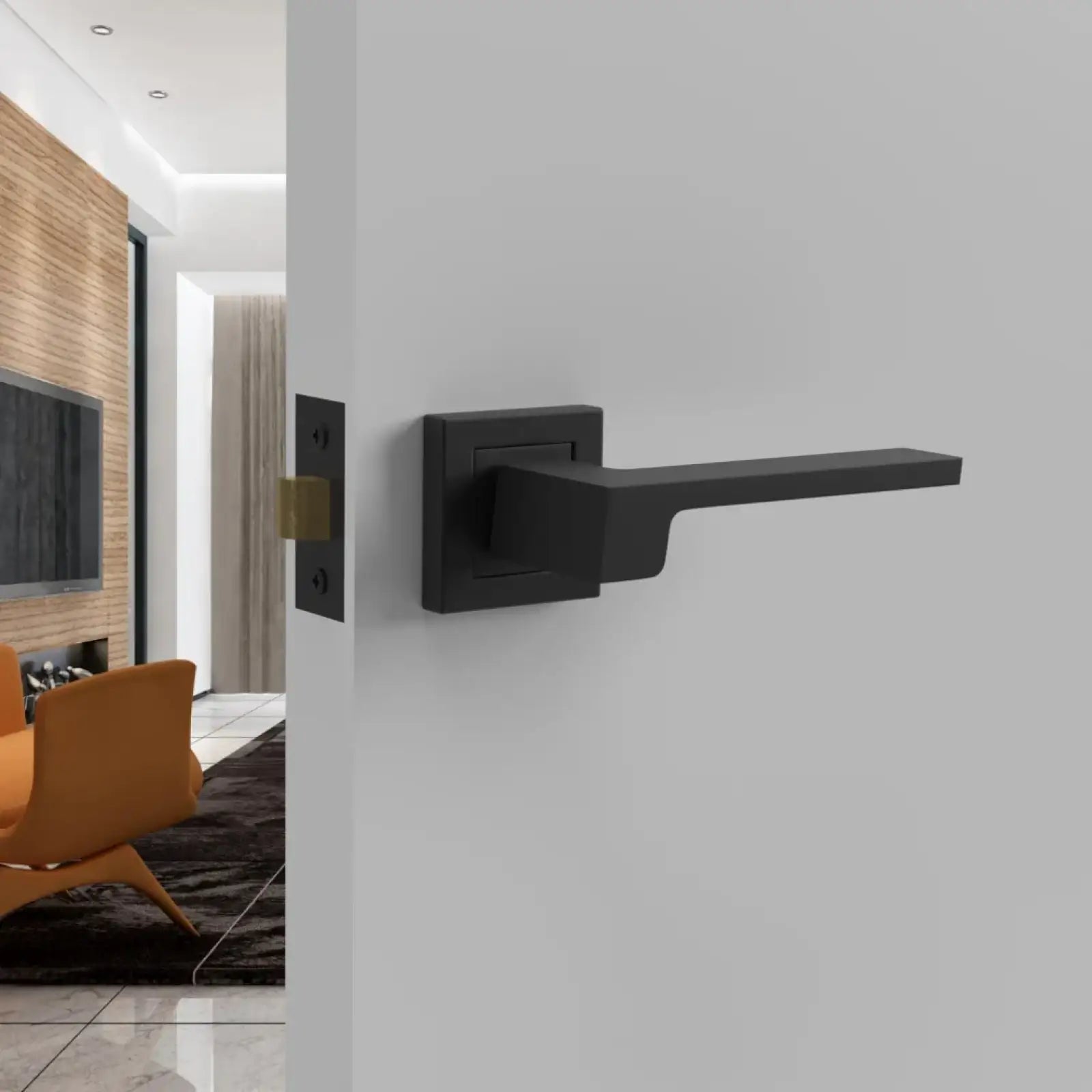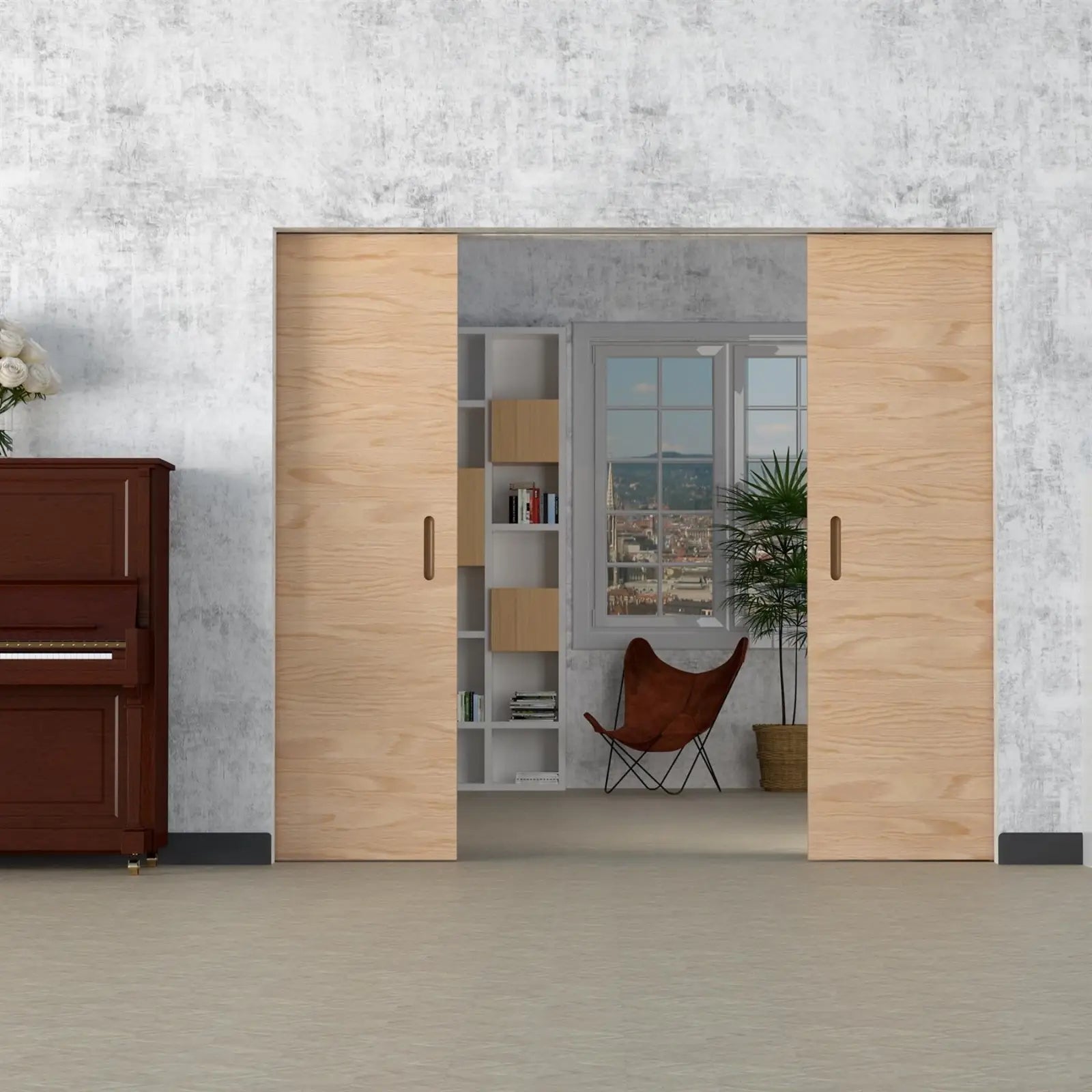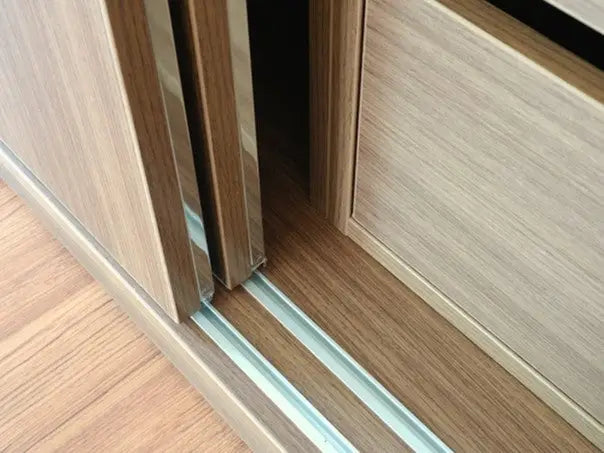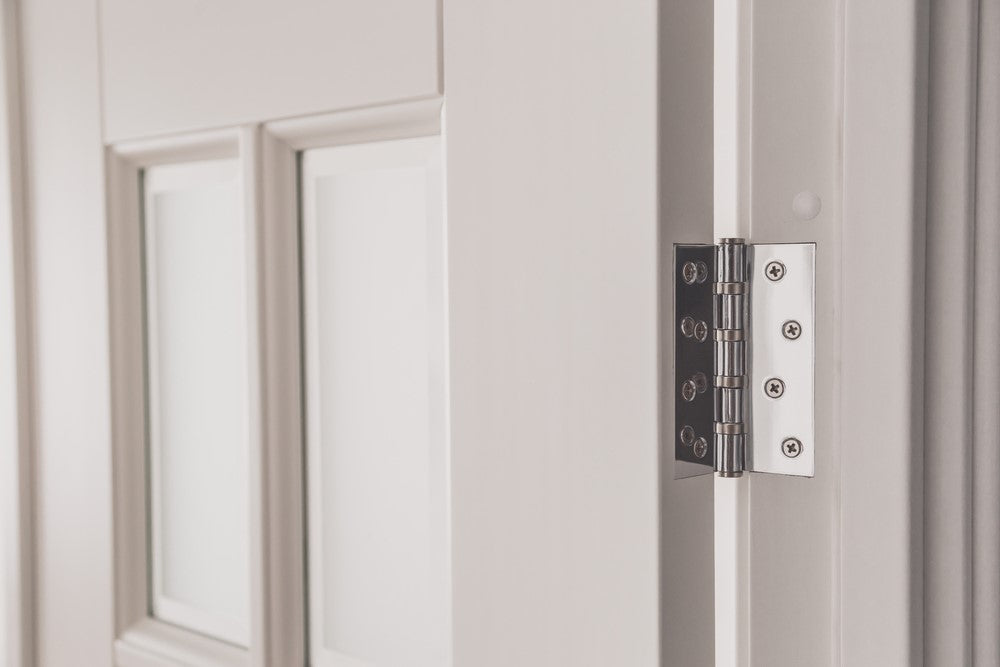How to Convert a Sliding Door to a Hinged Door
Converting a sliding door to a hinged door may seem like a big project, but with the right tools and guidance, you can easily do it yourself. It is a great way to update your home, improve functionality, or change the aesthetics of a room. Follow along for our easy guide on how to convert a sliding door to a hinged door.
Before You Begin: Important Considerations
Unlike sliding doors, hinged doors require space for the door to swing open. Ensure there is enough clearance on the side where the door will open. This can affect your furniture placement or traffic flow in the room.
The weight and size of the door will affect your choice of hinges. Sliding doors are often larger and heavier than hinged doors, so if you use the existing sliding door, you may need heavy-duty hinges to handle the weight. Also, ensure the hinges are compatible with the door material.
Learning how to convert a sliding door to a hinged door can be a rewarding DIY project, but it will cost money and take time. You’ll need hinges and potentially frame or structural adjustments. If you’re uncomfortable doing the conversion yourself, you’ll need to hire a professional.

Assessing Your Door Frame and Space Requirements
As a first-timer, you should remember that sliding doors typically have wider frames and a top track, whereas hinged doors have side hinges and may require a narrower frame. Check the width and height of the current opening to make any adjustments. Reinforcing the door frame or altering the wall structure to ensure the frame is suitable for a hinged door may be necessary.
Tools and Materials Needed for Conversion
Know how to convert a sliding door to a hinged door with our detailed guide and this handy list of tools and materials you’ll need:
- Existing doors
- Six door hinges
- Tape measure
- Spirit level
- Sandpaper
- Mortising chisel
- Hammer
- Screwdriver and hinge screws
- Cordless drill and drill bits
- Paint for touch-ups
- Door hardware and handles
- Wood or other filler
- Safety gear
- Doorstops
- Weatherstripping

How To Safely Remove Door Tracks
Start by preparing the area. Clear the space by removing any furniture or obstacles near the door. Protect the floor by laying down a blanket or padding to rest the door on once you’ve removed it.
Examine the track system for screws, brackets, or stoppers that secure the door. Remove stoppers on the top track to prevent the door from sliding off. If the door uses bottom guides, loosen or remove them as instructed in your door’s manual.
Remove any screws securing the track in place and lift the track off the door frame. Stand on one side of the door and slide the door towards the middle of the track, then tilt it upwards to lift the bottom rollers out of the bottom track. Once the bottom is free, lower the door to unhook it from the top track.
If you’re removing the system entirely, unscrew and detach the rollers or hardware from the door. Remove the track system by unscrewing it from the frame or wall. Store hardware like screws and brackets in a labelled bag for safekeeping.
Preparing the Door Frame for Hinges
Start by determining where the hinges will be placed. Depending on their weight, standard doors will need two to three hinges. Typically, hinges are placed between 7 – 10 cm from the top and bottom of the door, with the third hinge exactly halfway.
Use a tape measure to determine hinge placements. Mark where each hinge will sit on the door and the frame with a pencil. Measure the size of the mortises (recesses) for the hinges.
Use a hammer and chisel to carefully carve out the recesses on the door and frame. Ensure the recess is even and level. Use sandpaper to smooth out the surface of the recess.
Installing Your New Hinged Door
Before securing the hinges, pre-drill small pilot holes for the hinge screws. This prevents the wood from splitting. It also helps to ensure you install the hinges more securely.
Now, attach the hinges to the door using your screws, ensuring they are flush and aligned with the mortise. Repeat the process for attaching the hinge to the door frame. Make sure the door is properly aligned before tightening the screws.
Mounting Door Hinges Correctly
If you’re unfamiliar with hinge placement, a hinge template can help you mark the exact position for the mortises. Once installed, test the door by opening and closing it a couple of times to ensure it swings smoothly. Ensure that there is a consistent gap around the door – a good standard is a 3 – 5mm gap.
Adding Door Hardware and Handles
Once the hinges are securely in place, you can install the door, your hardware, and handles. The hardware you may need includes door handles, pulls and knobs, lever handles, and sliding door locks. It is best to follow the instructions provided for fitting locks and handles.
Finishing Touches and Adjustments
Sometimes, gaps, rough edges, or excess wood are left over after drilling. In this case, use the appropriate filler to smooth them over and create a neat finish. Touch up or stain any areas that have been damaged.
How to Ensure Proper Door Alignment
- Use a spirit level to ensure the door frame is plumb, level, and square.
- Place the door in the frame, using wooden wedges to hold it steady and level.
- Ensure there’s an even gap of 2–3mm around the door.
- Attach the hinges to the door first, then to the frame.
- Loosen and reposition the hinges slightly if the door isn’t aligned.
- Installing Door Stops and Weather Stripping
Various types of doorstops are available to protect walls and doors from damage. Installation depends on the type of doorstop you’re using. For best results, follow the instructions included when you purchase your preferred doorstop.
Weatherstripping products include foam tape, rubber or vinyl strips, door sweeps, tension strips, and metal or plastic V-strips. Installing any of these, including a glass sliding door, is normally quite straightforward. Be sure to measure the size of the door and cut the stripping to match the measurement.
Reverse Project: How to Convert a Hinged Door to a Sliding Door
- Remove the door from the frame by unscrewing the hinge plates from both the door and the frame.
- Set the door aside and remove the handle and hinge hardware. Fill the gaps left behind.
- Determine the track position where the track will be mounted above the door opening.
- Screw the track brackets to the wall or ceiling, ensuring they are level and aligned.
- Slide the track onto the bracket and secure it in place using the screws provided in the sliding door kit.
- Install the rollers according to the kit. They will either be installed in pre-cut slots or attached to a metal bracket that’s secured to the door.
- Attach bottom guides (if needed) at the bottom of the door to help it stay aligned with the track.
- Install the sliding door by lifting it onto the track and hanging the rollers onto the track.
Frame Modifications for Sliding Systems
If you need to modify the frame to accommodate a sliding system, measuring the width, height, and depth of the existing frame is important to ensure the sliding door and track system fit perfectly. Ensure the frame is sturdy enough to support the weight of the sliding door, especially for heavier materials like glass or timber, and reinforce it if necessary. Remove the existing trim or casing around the frame to create a flush surface for the track or guide system.
Installing Sliding Door Hardware
Once the sliding door is installed, add your chosen locks, levers, knob, and handles. Installation depends on the size of the door, as well as factors such as security, ease of access, and your decor style. Refer to the manufacturer's instructions to ensure you install the hardware correctly.
Get All Your Door Hardware from Decor and Decor
Now that you know how to convert a sliding door to a hinged door, browse our website for all the hardware you need to complete the job. View our selection of quality sliding door kits, door hardware, door hinges, knobs, handles and locks. Contact us for any advice!
FAQs
How much does it typically cost to convert a sliding door to a hinged door?
The cost of converting a sliding door to a hinged door depends on the door material and style, hardware and accessories, and whether structural changes are needed. A conversion could range between £300 and £800. If you are not doing it yourself, get detailed quotes from local tradespeople.
Will I need to modify my existing door frame?
A hinged door frame structure differs from that of a sliding door. So yes, you’ll most likely have to modify it. In some instances, you may have to completely replace the frame.
Can any sliding door be converted to a hinged door?
In theory, any sliding door can be converted into a hinged door. The most important considerations are the structure of the door frame and the door material and weight. If you’re unsure, contact a professional to advise you.






